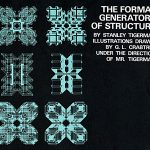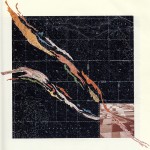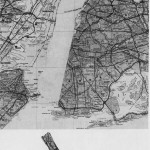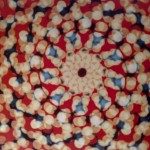Wonderful online archive UbuWeb, created in 1996 by conceptual artist, poet and theorist Kenneth Goldsmith (author of many books among which Duchamps is my lawyer), is a goldmine for avant-garde documents (experimental literature, film, and music). Together with Monoskop, aaaaarg, Libgen, Memory of the World and the Internet Archive, among some others, we consider it as one of those few websites able to define the specificity of the Internet as a medium and determine its historical, political and cultural agency.
Some days ago, in one of our regular derives in this universe, we stumbled upon the work of painter and comic artist Martin Vaughn-James (1943-2009), to whose publications UbuWeb dedicated a run of online reeditions.

Vaughn-James’ series of ante litteram graphic novels, especially the sequence of four works Elephant (1970), The Projector (1971), The Park (1972) and The Cage (1975), are infused with surrealist overtones and can balance an evidently experimental character with “complete control of the language of comics,” as underlined by critic Andrei Molotui.
The last of these four books, entitled The Cage, is probably the most critically acclaimed. Sporting short descriptive texts upon or below single-page illustrations or spread panels, the self-described “visual novel” is devoid of any human presence and stages an imaginary journey across empty rooms and post-apocalyptic scenarios infused with feelings of loneliness and decay.


In 2004, critic Domingos Isabelinho published an extensive essay on The Cage (“The Ghost of a Character: The Cage by Martin Vaughn-James“). In the text, he underlined the historical context and the impact of the book, its debt to the contemporaneous work of the authors belonging to the Nouveau Roman group, the role of the character, (or his absence thereof), the importance of linear perspective in accentuating the claustrophobic character of the architecture the novel is staged in.
Isabelinho wrote:
Being without a traditional story, or traditional characters, how should we read The Cage? Thierry Groensteen, who proudly bought the author’s working booklets and all of the book’s original pages on behalf of the Centre National de la Bande Dessinée et de l’Image (CNBDI) quotes one of the aforementioned booklets in his book La construction de La Cage (page 64): “An image of a bed, for example, presented early in the sequence of events, cannot remain unchanged by the time it reappears later on, for it appears the second time after the presentation of numerous other images, which must, by their very existence within the sequence, affect the way in which we see the new presentation of the earlier image.” This gives us a very good clue about how to read this enigmatic book and comics in general. When we follow the doings of any comics character, such as Uncle Scrooge, we must create the illusion that the dozens of Uncle Scrooges that Carl Barks drew are not twins or clones, but just one character evolving in time and space. We connect the drawings on our minds. One drawing affects our way of “reading” the next one.

The critic ended his review with:
What’s decidedly modern is Vaughn-James’ lack of respect for the chronological diegesis. In these metaphysical non-places time ceases to be a meaningful concept (or, to be exact, it is the center of the book’s sense, not as something that is passing here and now, but as an abstract concept). If certain sequences, like Mexico and the electrical pumping station, respect the chronological passing of time, others, like The Museum, don’t. Images relate back and forth, leaping in time. The reader needs to use his or her memory in a very active way because, unlike in more traditional comics, the connection between the images may be pages apart (hence the idea of a labyrinth, or web). The labyrinth also echoes the very complex structure of the interplay between words and pictures: sometimes the words are in accordance with the image that’s on the same page, sometimes they aren’t, describing things that are somewhere else in the book. Sometimes they describe things can’t be found in the pictures at all, because they’re sounds.
The Cage is a book about our desire to communicate (in the book we were substituted by, we are made of, modern communicating, recording, and measuring devices), our struggle to perpetuate our memory, our ideas, and our feelings against something that’s sublimely far bigger than ourselves: Time. We are cages trying to reach other cages. We, the cages, and our pathetic inventions, will inevitably be destroyed. Even something as grandiose as a pyramid will eventually disappear.
You can read and download The Cage (and other works by Vaughn-James) from UbuWeb. Here follows a selection of spreads.
























merci pour le travail de recherche,
une decouverte
un bijou que je me suis empressé de commander pour le lire en version papier et traduite.
merci encore